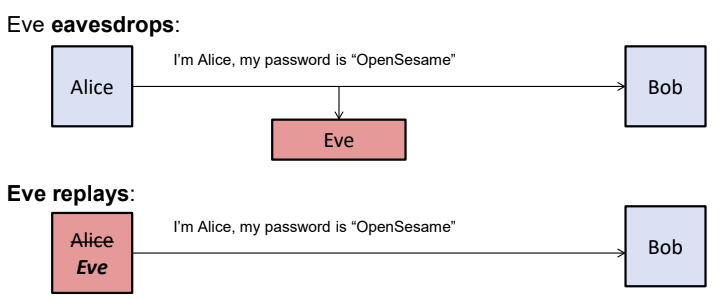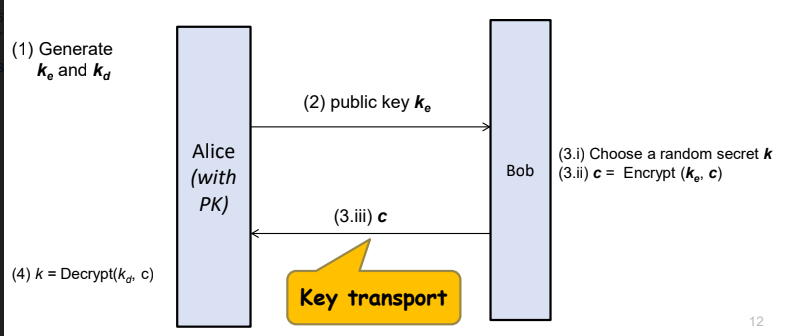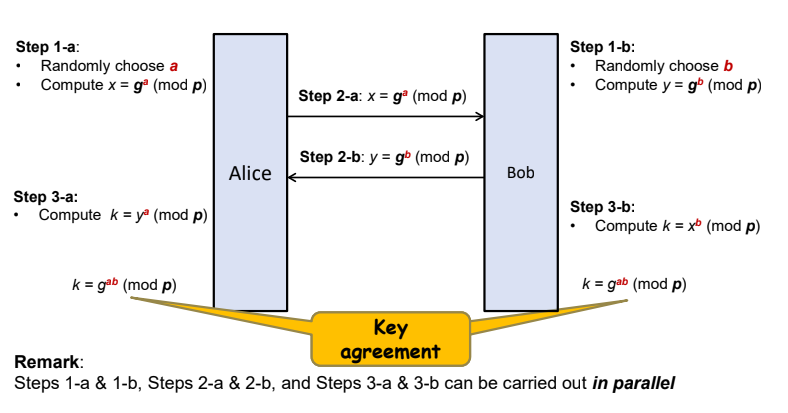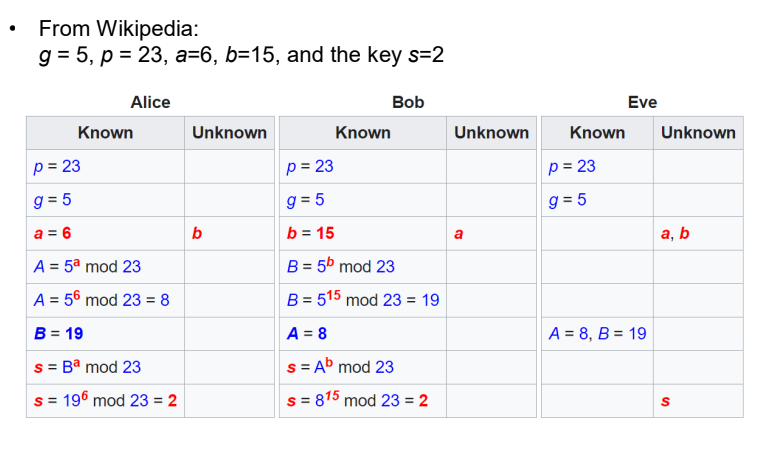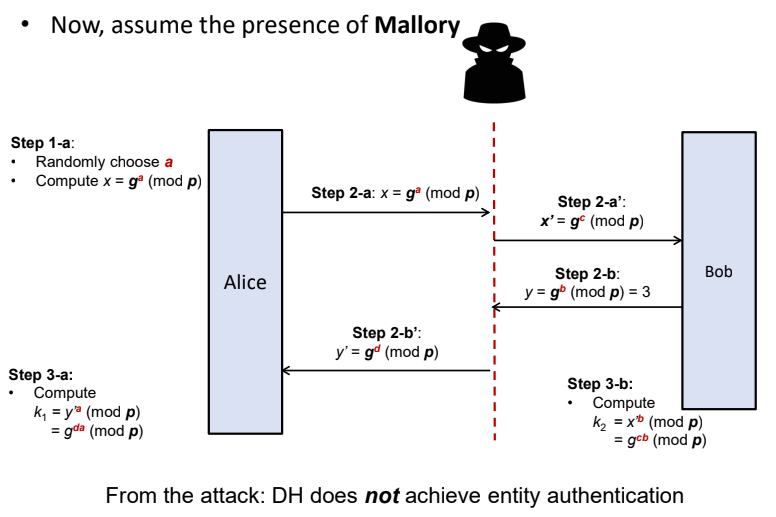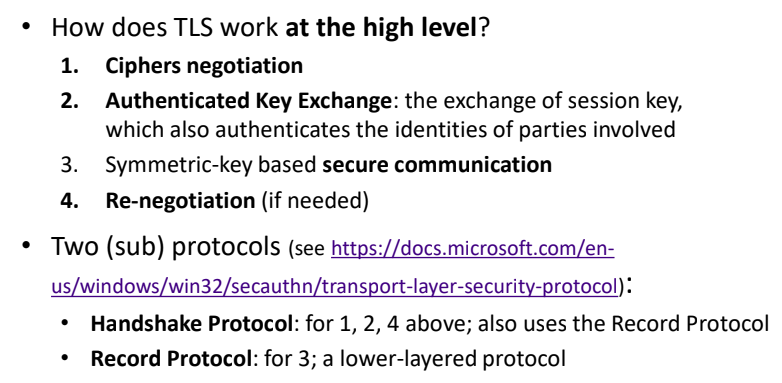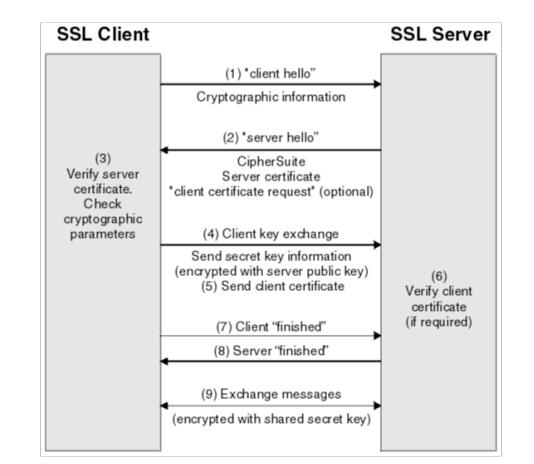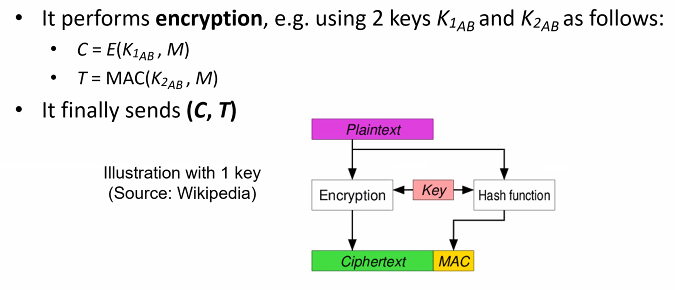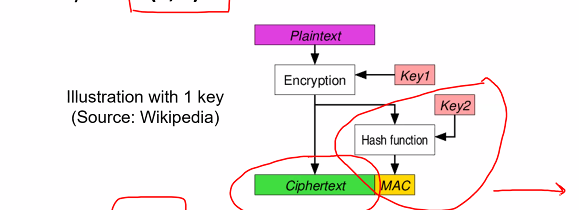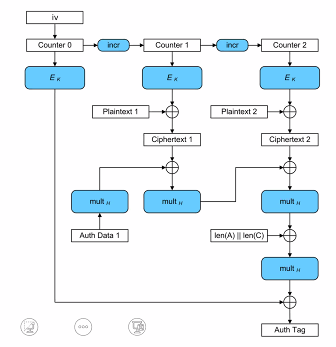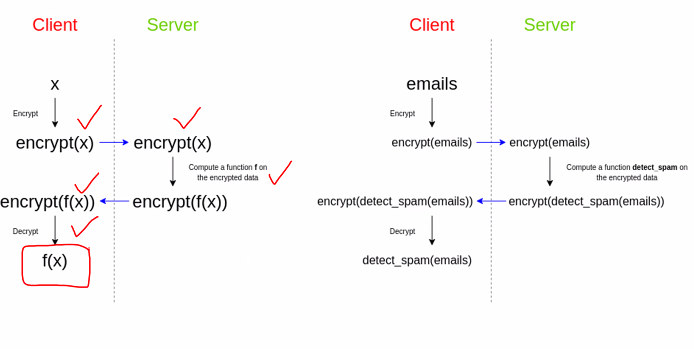Strong authentication
Password is weak authentication: Any eavesdropper can get the password and replay it.
- The password: The secret shared and exchanged between Alice and Bob
- Is it possible to have a mechanism that ALice can prove to Bob that she knows the secret without revealing the secret
SKC Bashed Challenge response
Suppose Alice and Bob have a shared secret key k, and both of them agree on an encryption scheme say AES
- Alice sends Bob a hello message
- (Challenge) Bob randomly picks m and send to Alice: y = Ek(m)
- (Response) ALice decrypt y to get m and then sends m to Bob
- Bob verifies that the message received is indeed m is so accepts other wise rejects
- Even if Eve can obtain the communication between Alice and Bob, he cant get the secret key k
- Eve cannot replay the response either: challenge m is randomly chosen and likely to be different in the next authentication session
- The protocol only authenticates alice: Unilateral authentication
- There are protocols to verify both parties: Mutual authentication
What is freshness in the context of authentication protocol
Using PKC:
- Alice sends Bob a hello message
- (Challenge) Bob choose random number r and send to Alice: “ALice, here is your challenge, r”
- (Response) ALice use her private key to sign r and sends to bob: Sign(r), Alice’s certificate
- Bob verifies Alice’s certificate, extracts Alice’s public key from the certificate then verifies that the signature is correct
- Eve cant know nor derive Alice private key and replay the response because the challenge r is likely to be different
- The value r is also known as cryptographic nonce
The shown protocol have omitted many details, designing a secure authentication protocol is not easy
Is authentication alone sufficient
-
There might be mallory who can modify messages and want to pretend to be ALice
-
After Bob is convinced that he is communicating with ALice, Mallory interrupts and takes over the channel whilst pretending to be Alice
- Strong authentication: Assumes Mallory is unable to interrupt the session
- For applications whereby Mallory can interrupt the session, we thus need something more
-
The outcome of the authentication process must be the new secret k (Session key) established by Alice and Bob
- The process of establishing a secret between Alice and Bob is called key exchange, key agreement, key establishment
- Subsequent communication between Alice and Bob must be secure using the session key which is established by alice and bob
Key exchange and authenticated key exchange
Using a key exchange protocol such thateve is unable to extract any info of the established key
- Cipher
- MAC
Consider only Eve who can sniff and not mallory who can modify the communication
PKC based Unauthenticated Key exchange
- Alice generates a pair of private and public key
- Alice sends the public key ke to bob
- Bob does:
- Randomly choose secret k
- Encrypt k using ke
- Send ciphertext c to Alice
- Alice use her private key kd to decrupt and obtain k
Basic/Unauthenticated Diffie-hellman Key Exchange
Assunming Bob and Alice have agreed on two publicly known parameters: A generator g and a large prime p
Example
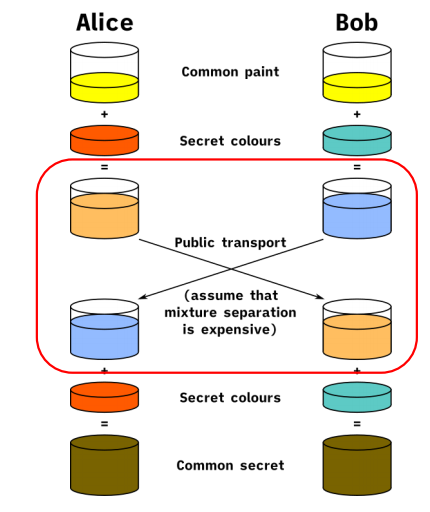
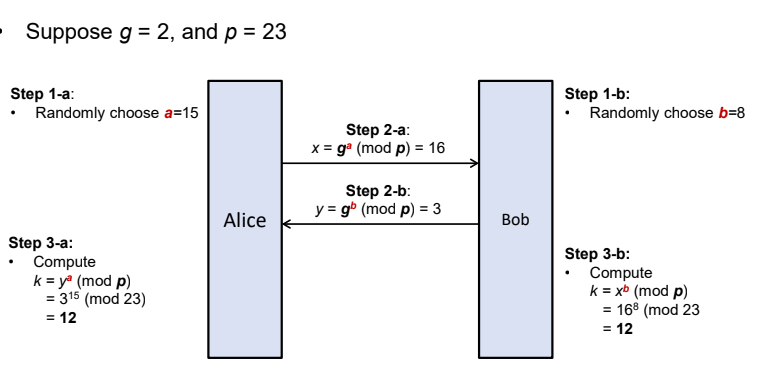
Is Basic/Unauthenticated DH key Exchange secure
- Mallory can just pretend to be Bob to Alice and Alice to Bob
- Mallory becomes MitM
With Mallory:
- Alice mistakes Mallory for Bob
- Since Communication from Alice is encrypted using Ka, Mallory can decrypt it using Ka and renecrypt it using kb
- Mallory can see and modify messsages
PKC based authenticated key exchange cna be easily obtained from existing key exchange
Why
Goals:
- Key secrecy (Confidentiality)
- Entity Authenticity
Solution:
- Incorporate the key exchange process with authentication (Authenticated key exchange (AKE))
Station to station protocol (STS)
- Add signatures to DH: Authenticated key exchange based on DH
Unilateral authentication: Alice want to authenticate Bob
Mutual Authenticated Key exchange
- Unilateral authentication protocol extended to a mutual authentication: Make alice sign her message in step 2 -a
Requirements:
- Mutual authentication: Alice and Bob must have a way to know public key
- Unilateral authentication: Only one party needs to have a public key
- After the protocol has completed, a set of session keys is establised using a key derivation function (KDF) like HKDF
- 1 key for encrypt 1 key for MAC
- Additionally, 1 key for each direction of encryption/MAC
Putting all together: Securing a communication channel
- Communication channel is subjected to sniff and spoof
- A secure channel establised between 2 programs, a data channel that has confidentiality, integrity, authenticity against a computationally bound network attack (Mallory)
Establish a secure channel between Alice and Bob such that we can protect the authenticity, integrity and confidentialy of the communciation
Secure channel
- ALice and Bob carry out a unilateral authenticated key exchange using Bob’s private and public key
After authentication both bob and alice known two randomly selected session keys k,t
- k: Secret key of symmetric key encryption(aes)
- t: the secret key of MAC
- Subsequest communcation between Alice and Bob will be protected by k,t and sequence number i
Suppose m1, m2,m3 are sequences of message exchange, the actual data to be sent for mi will be:
where i is the sequence number, || is concatenation
Secure channel and PKI usage
- Still need distribute public keys
- PKI is use to distribute public key
- Likely involve certificate with the authenticated key exchange
Example:
- Alice visit bob and wants to verify that the entity she is talking to is Bob
- ALice then needs to know Bob.com public key
- Right in the beginnning of the authentication protocol, Bob.com directly sends it certificate which contain his public key to Alice
Putting all together: TLS/SSL
- HTTPs is use to secure
- It is built on top of SSL/TLS:
- Transport layer security (TLS) is a protocol to secure commincation using cyptographic means
- SSL is a predecessor of TLS
- TLS/SSL adopts similar framwork as in the previous part to establish a secure communication channel
- TLS/SSL sits in betweeen TCP transport and app layers
TLS protocol
Tls Handshake
What is a protocol
- A set of rules for exchanging infmation between multiple entities
- A prtocol is often descibe as a set of actions to be carried by entities and data to be transmitted
E.g
Authenticated Encryption
Authenticated encryption is a symmetric encryption that returns both ciphertext and authentication tag
- Combines cipher and MAC: Ensures confidentiality and authenticity
- Authenticated encryption: AE(Kab, M) = (C,T)
- Decryption process: AD(Kab,C,T) = M only if T is valid
Different variants/approaches:
- Encrypt and MAC
- Mac then Encrypt
- Encrypt then mac
- Specialised authenticated cipher
Encrypt and Mac (E&M)
- The sender computes ciphertext C and tag T seperately
- Used in SSH
Issues: T may not be random looking and could leak info
MAC then Encrypt (MtE)
- Sender first compute tag T = MAC(k2AB, M)
- Generates the ciphertext C = E(K1AB, M
||T) -
Sends C
- Used in SSL and TLS in ver 1.2
Issue: Decyption is still needed on a corrupted message
Encrypt then MAC (EtM)
- Sender generates ciphertext C = E(K1AB, M)
- Computes tag T = MAC(K2AB, C)
-
Sends (C,T)
- USed in IPsec
- Feature: A decryption is not performed on a corrupted message
Authenticated cipher
- returns an authenticated tag together with ciphertext
Birthday attack variant
Birthday attack on hash
- Suppose digest of hash is 80 bits: T = 2^80
- Attacker wants find collision
- Attacker randomly generates 2^41 messages (M=2^41)
- Then M > 1.17 T^0.5
- Hence the prob more than 0.5 among the 2^41 messages, two of them gives the same hash
Variant
- Let S be set of k distict elements where each element is a n bit binary string
- Independently and randomly select m n bit binary string
- Prob that at least one of the randomly chosen string is in S is (larger than):
Notice that the set S and the set of generated m strings are differnet
Other interesting cryptography topics
- Format preserving encryption:
- Basic cipher cdoes not care if the plaintext is an image
- Ciphertext is not viewable image
- A format preserving encryption sovle the issue: - Ciphertext has the same format as the plaintext
- Other possible target plaintext types: IP address, zip code, credit card numbers
- Fully Homorphic encryption
- Enables user to replace a cipher text C = E(K, M) with another ciphertext C’ = E(K, F(M)) where F() is a function of M without ever decrypting the initial ciphertext C
- This is useful for cloud provider: Does not need to know the content of M in order to change
- However this is very slow
